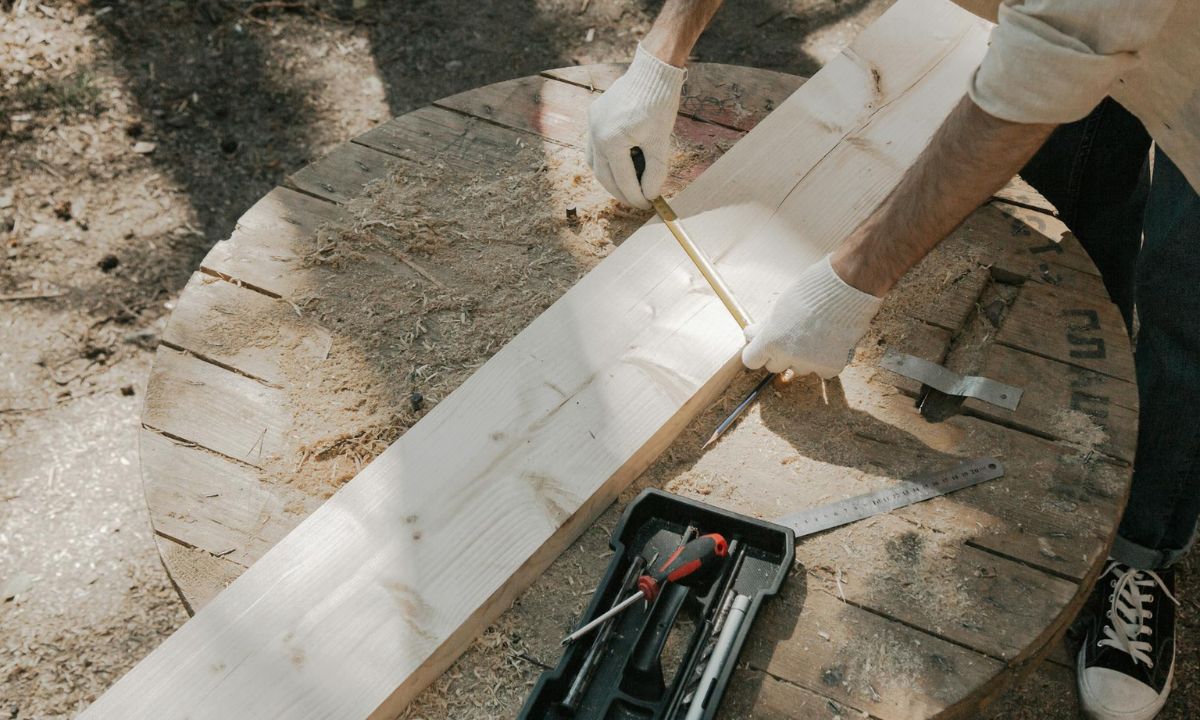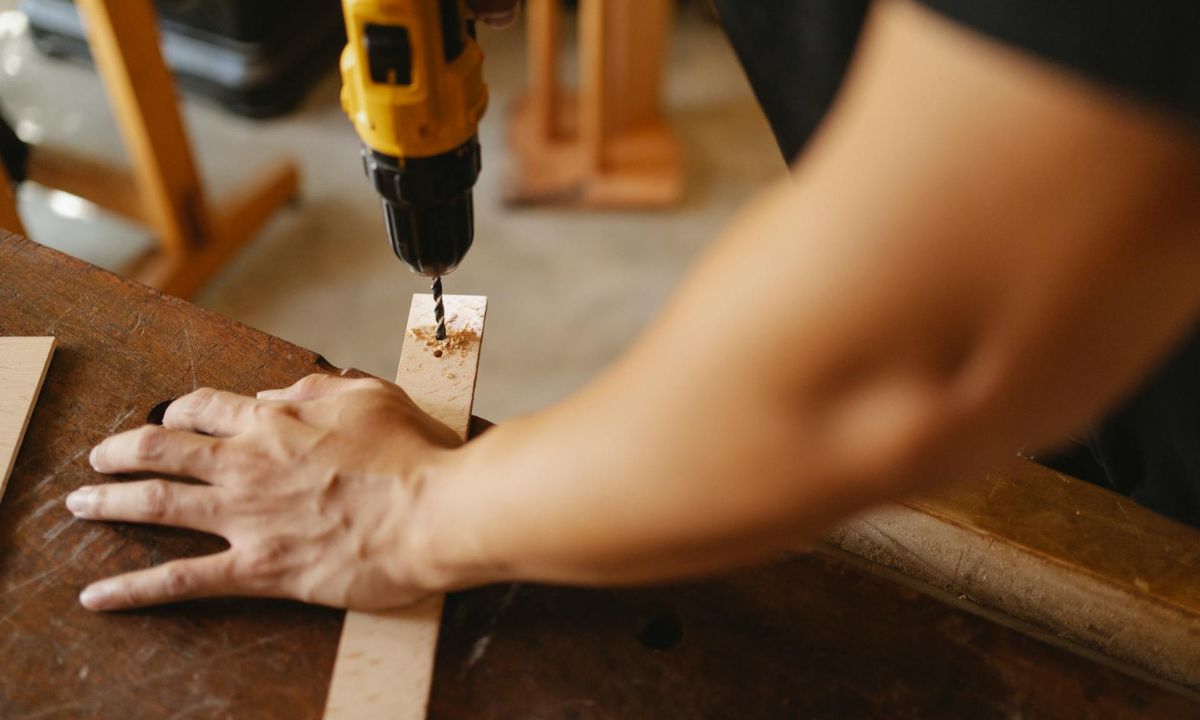What is the First Tool You Should Get When Starting Woodworking?
Woodworking is one of the ancient forms of craftsmanship, which is putting together creativity with precision and functionality in gallons of fun. The go from furniture to decoration pieces or just an interesting hobby is endless. However, as a fresher, it is pretty daunting to get started with the right tool. The possibilities can be so huge that entering into the ocean of chisels, saws, and planes could be little bewildering. But what is that very first tool which one needs to have upon entering the woodwork? Well, let us dive in to find the details.
Take Your Woodworking to the Next Level! Build 16,000 Woodworking Projects With Step-By-Step Plans
Why Choosing the Right First Tool Matters
But before we delve into that ultimate first tool for the beginning woodworker, a word on why tool choice is such a big deal in the first place: your very first tool really starts you down the journey of woodwork-ing, and it is going to determine whether you’ll be confident and creative or frustrated and frittering away lots of time. You may pick up a number of very useful new skills on the path to successfully completing the projects, while building momentum with every new right tool added to your toolkit.
Think of your very first tool as the key to mastering woodworking: versatile, easy to operate, and able to see you through a wide array of tasks. Keeping this thought in mind, let’s take a look at the best candidate who deserves to be labeled the “first tool that every woodworker should own.”
The Handsaw: A Timeless Essential

Of all the tools that one may own relating to woodwork, there is probably nothing more important than a handsaw. Having been centered in the middle of woodworking for ages, and rightly so, it has been a very versatile and not very expensive tool that requires no electricity either; hence, making it very suitable for any amateur. Whether ripping boards to width, trimming edges, or in precise cut joinery, a handsaw is an essential tool and part of the indispensable tool set that every good woodworker owns.
Why a Handsaw Is the Best First Tool
- Affordability: A good handsaw can be bought for reasonable outlay compared to any power tool. As a fresher in the woodwork category, you will find a good saw for less than $50.
- Portability: It doesn’t take any cord or batteries with the handsaw; you can just keep one with you wherever you go—be it in the garage, at the backyard, or at your friend’s workshop—it’s always ready to rock.
- Skill Development: Handsaws will establish ground on more basic skills such as measuring, marking, and correctly cutting a wood joint, thus giving meaning to application in higher-order operations.
- Versatility: Cross cut, rips—all kinds one may need. A good practice offers neatness and tidiness similar to the cuts given out by a powered machinery.
- Safety: Handsaws are far less dangerous than any power tool, especially for a starting worker. Of course, you still need to learn and make use of the proper technique, but chances of injury are much lower comparing with work on table saw or circular saw.
Build 16,000 Woodworking Projects With Step-By-Step Plans
How to Choose the Right Handsaw
Not all handsaws are equal, and with your first tool, you would want to pick a saw suited for your best needs. The following is what you will need to know:
- Type of Saw: There many types of handsaws—from crosscut saws and rip sawes to backsaws. What a beginner will need is just a general purpose handsaw.
- Tooth Count: The fineness or coarseness of the cut is determined by tooth count. A saw with 8-10 teeth per inch is perfect for general woodwork.
- Blade Length: Longer blades, such as those approximately 22-26 inches in length will work best when trying to cut larger portions of wood. A shorter blade is easier with which to maneuver during finer work.
- Handle Comfort: Just find a saw with an ergonomic handle that just feels comfortable in your hand. This would reduce fatigue, improve control.
- Brand Reputation: Go for reputable brands like Stanley, Irwin, or Bahco. These firms are reputed for churning out high-quality instruments.
Other Essential Equipment
Along with having the handsaw as your best first tool in woodworking, a few more things are required to be added. The quick rundown goes somewhat like this:
- Measuring Tools: To do this, the required tools are a tape measure, combination square, and marking gauge.
- Clamping Tools: These tools will keep your workpiece tight and fixed hence providing stability and accuracy when doing the actual cut and putting the pieces together.
- Set of Chisels: This set is indispensable for carving and cleaning up a joint.
- Hammer and Mallet: Major tools in driving nails, setting adjustments to joints, and assembling projects.
- Workbench: A very strong workbench will avail a perfect base to cut, sand, and assemble your projects.
Take Your Woodworking to the Next Level! Build 16,000 Woodworking Projects With Step-By-Step Plans
Tips for Beginners

Of course, any new hobby always sounds intimidating, but the right mindset and approach will have you churning out woodworking projects that amaze everybody. A few get-you-started tips hereby are given:
- Keep It Simple: Start with simple projects like a cutting board, picture frame, or just a small shelf. Each one of these will go a long way in helping to build his skill and confidence while dealing with wood.
- Learn the Basics: Learn to measure, learn to mark, and learn to cut. These would be the backbone that all the more intricate stuff would lay on.
- Invest in Quality Tools: With the budget this tight, it can be quite tempting to buy in cheap. However, investment in good quality equipment pays much better dividends toward saving frustration and time.
- Practice Safety: Wear goggles where called for. Keep the working area clean, using proper technique to avoid injury.
- Join a Community: Woodworking is more fun with others. Join your local woodworking club or online forum today and find other people who can relate to what you’ve gone through or are going through.
Why You Should Consider This Offer
Getting the right tools as you get started with woodworking, really will be helpful. If the person intends to go in-depth with the tools and techniques, then consider referring to this great resource. Indeed, this is filled with some valuable information that would assist in selecting the best tool based on needs and master the craft of woodworking.
Common Mistakes to Avoid
Even expert craftsmen commit mistakes, but novices are very likely to make particular types of errors. Following is a partial list of the common ones one must avoid:
- Insufficient Planning: Not thinking out about a project may lead to frustration and wasting resources due to poor usage. One should always begin any project with good planning and proper measurement.
- Working with Dull Tools: A set of dull handsaw or chisel is a bad and frustrating incident. Keep your tools sharp and in good working conditions.
- Safety Precautions: Woodworking might be injurious if not dealt with care. Therefore, wear protection gear and take all the possible precautionary measures inside the workshop.
- Overcomplicating Projects: The enthusiasm of beginners to the job is great, but leads them to overestimate their enthusiasm and plunge head-first into projects that are beyond their skill level. Start simple and work upwards.
- Poor Care of Tools: Cleaning and sharpening will extend their life and increase performance too.
The Joy of Working with Wood
But probably more satisfying than all of the above when working with wood is that feeling of satisfaction one derives from creating something himself, either some very skillfully made table or maybe a handmade present for your loved one. In woodworking, your creativity will leave a long-lasting legacy.
With more practice and more tools to add to your skills, the development of new techniques, materials, and possibilities will keep happening. Woodworking is a journey, and it is a chance to grow with each new project.
Take Your Woodworking to the Next Level! Build 16,000 Woodworking Projects With Step-By-Step Plans
Final Thoughts
Where to start? Quite obviously, the handsaw is an inexpensive tool, yet very adaptable in helping to work out the essentials needed in all the basic skills that any worker needs to acquire. This, and a few other tools of less than basic sophistication, go a long way toward one creating very attractive and useful pieces.
Patience, practice, and the disposition to learn are the keys to success. Never be afraid to make mistakes; these form the important features of learning. You can also refer to this incredible resource packed full of tips, tricks, and expert advice.
Frequently Asked Questions
1. Can I start woodworking without experience?
Of course, it is an art that can be mastered by anybody with enough practice and devotion. First, start with simple projects, then do progressively more difficult projects.
2. Does one need lots of space to start woodworking?
Not necessarily, though ideal, starting a workshop does not really mean one has to have space for it; one can very well begin in a small garage, basement, or even a corner of the living room.
3. How much money does it take to get started with woodworking?
You can start woodworking on an extremely low budget. You could get yourself started by buying a set of basic hand tools—a basic saw, a measuring set, clamps—around or less than $100—and then added into your cache when you are experienced enough.
4. How can I learn to woodwork best?
Utilize online tutorials augmented with books and classes if available. Then you can get much help and assistance from fellow members of any general woodworking group for better practice of the trade.
5. Where to get good tools?
Some decent tools can be found in various hardware stores; many more are found online, and of course, at speciality stores for woodworking. For an all-encompassing resource, go to this website for an overall guide through tools and their techniques.
Conclusion
Indeed, it is a gratifying and enriching hobby; it allows boundless creativity and expression of oneself. Equipped with the right tool at one’s side—say, a handsaw—apart from a good foundational skill, you will surely be well on your way to making beautiful and functional pieces worth pride.
From great information on how to select the best tool to perfect the key techniques in bringing your project into being, this is an ultimate guide for someone who is seriously ready for that next step into the world of woodworking.
Take Your Woodworking to the Next Level! Build 16,000 Woodworking Projects With Step-By-Step Plans
Can You Make Money Selling Woodworking Projects?
What Woodworking Project is Most Profitable?
How to Make Money Fast with Woodworking?
What is the Highest Paid Woodworker?
Is Woodworking a Good Business to Start
What is the Best Platform to Sell Woodworking Projects?
How to Sell Wooden Items Online?
Woodworking Related Topics And Tags: beginner woodworking tools, first woodworking tool, handsaw for beginners, woodworking essentials, how to start woodworking, woodworking for beginners, essential woodworking tools, best handsaw for woodworking, woodworking tips, beginner woodworking guide, starting woodworking, first tool for woodworking, handsaw guide, woodworking basics, beginner woodworking projects, woodworking tools for beginners, how to choose a handsaw, woodworking starter kit, beginner woodworking tips, woodworking skills
